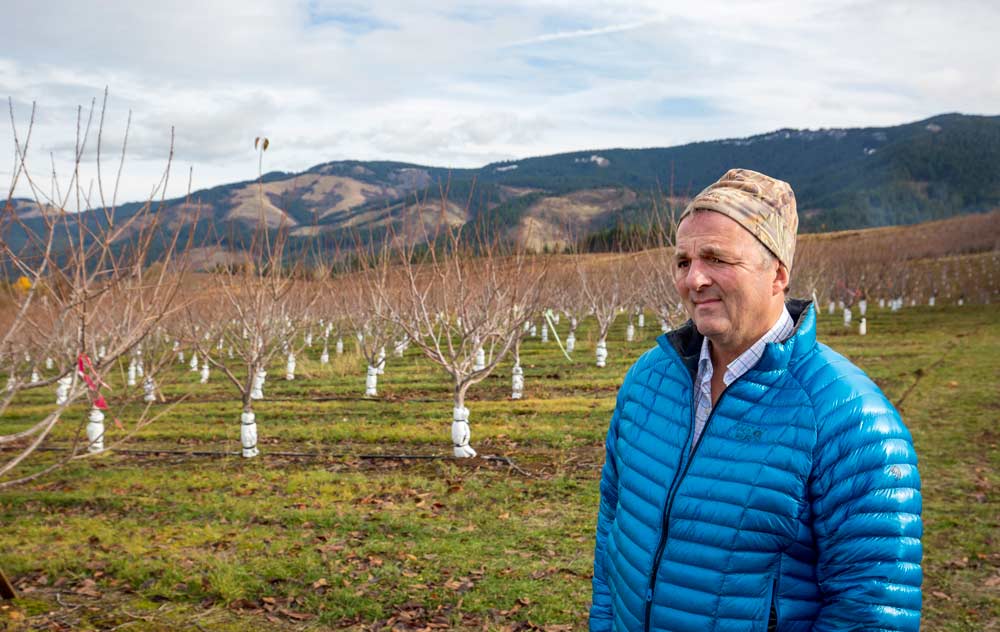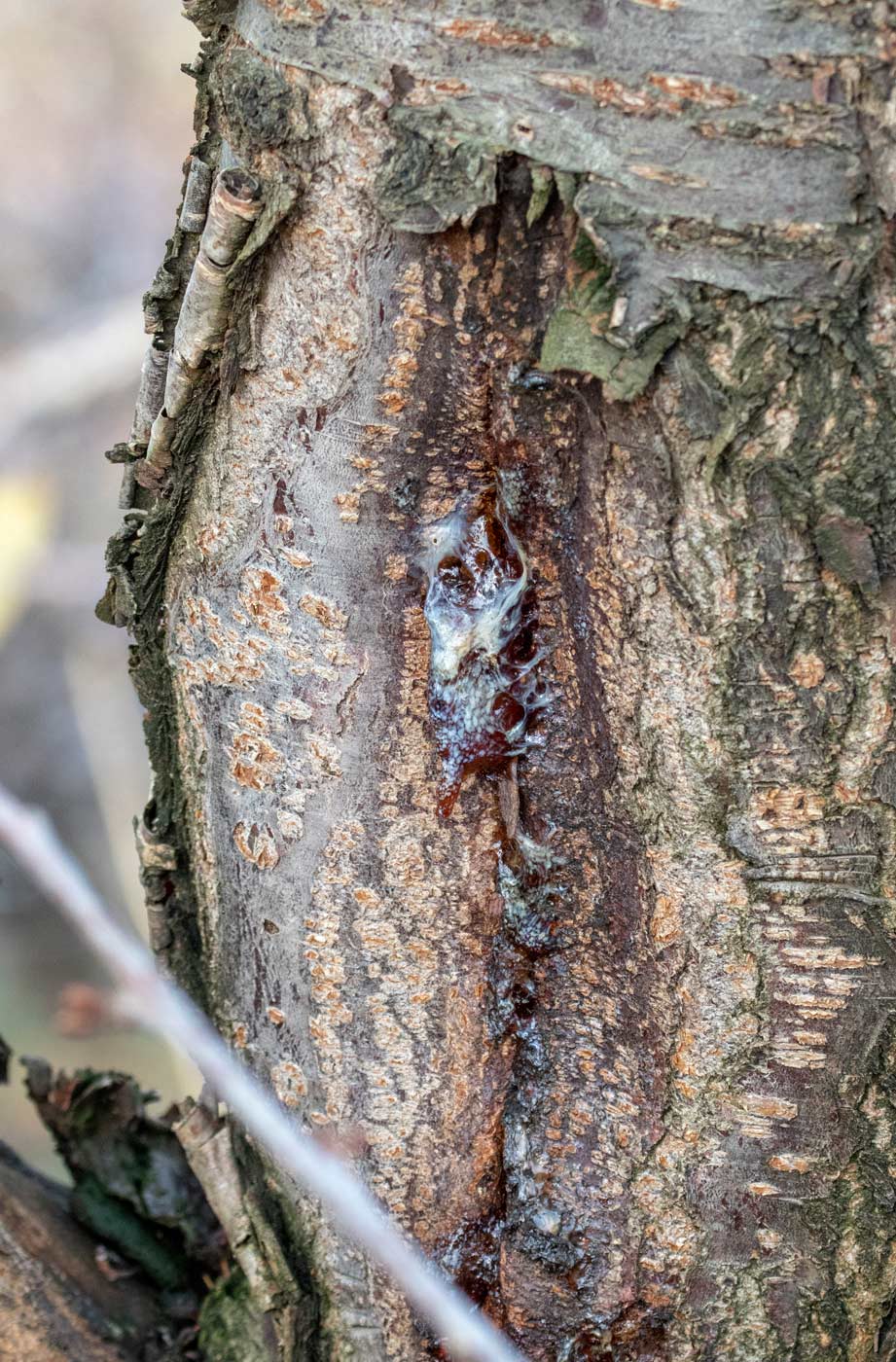
At 2,500 feet of elevation, Brad Fowler’s high altitude cherry block stands at the base of Mount Hood in Parkdale, Oregon, where cold weather is one of his biggest challenges. (TJ Mullinax/Good Fruit Grower)
Planting 60 percent Lapins. Wrapping trunks with insulation. Expecting some trees to die every year. Growing cherries at 2,500 feet in the Oregon Cascades takes some unusual tricks.
Of Brad Fowler’s 300 acres of cherries, roughly 80 stand just uphill from the high-elevation, unincorporated community of Parkdale. His orchard is one of the last along Cooper Spur Road as it winds up the shoulder of Mount Hood, where unpredictable weather patterns roll down and around its slopes to his orchard.
“Mount Hood has a thousand moods,” he said.
But Fowler chose to be there with Hood River Cherry Co., which he owns with his wife, Katherine. They also own a packing facility in nearby Hood River.
Looking to capitalize on late season demand, he planted his first high-elevation block in 2000, figuring it would enable him to fill the market and find labor. And it has. He has harvested as late as Sept. 6, overlapping with pears at times.
“I knew that the only future for cherries in Hood River would be in late cherries,” he said. Other positives include fruit maturing after the threat of summer rains and a daytime-nighttime temperature fluctuation that boosts the Brix of his cherries.
However, there are drawbacks to being up so high, and most of them involve cold.

Brad Fowler, who owns Hood River Cherry Company with his family, is experimenting with wrapping the trunks of his trees with household insulation to protect them from winter damage. (TJ Mullinax/Good Fruit Grower)
Fowler is limited in varieties, for one thing. He has tried Skeenas, Reginas and Rainiers; all of them died from winter injury. Lapins seem to tolerate cold the best. He also has to replant a lot of trees, especially in the first six years, giving his blocks a hodgepodge of tree ages that make management tricky sometimes. Once trees reach six to eight years, they are relatively tough, he said.
November is his diciest month, he said, as he walked his rows last fall. Snow had already fallen and melted once in his blocks and created a patchwork pattern on some of the nearby hilltops.
“Basically the month of destruction is November,” he said.
The trees are still building up cold hardiness after their late harvest.
To manage the cold, he uses only dwarfing Gisela rootstocks because they push trees to production early. That doesn’t protect the trees, but it boosts his chances of getting a return before a hard freeze wipes them out. He manages for a target yield of about 6 or 7 tons per acre.
Meanwhile, he is experimenting with wrapping his trunks in insulation and plastic but he does not recommend it yet. He worries it may cause even more problems with fungus later. “There could be unintended consequences,” he said.
And bordering dense fir forest land, bears are one of his biggest pests in spite of his beefy fencing.

Evidence of winter damage appears on one of Fowler’s trunks. (TJ Mullinax/Good Fruit Grower)
Fowler is not afraid of frontier farming, though. The newcomer entered the cherry business in 1993 after a long career in logging.
He acknowledges that sometimes puts him at a disadvantage compared to multi-generation farmers, such as Mike Omeg of The Dalles, known for his entomology experience and participation in university trials.
Fowler’s comeback is, “My trees are just as smart as his trees.”
And he and his employees sometimes enjoy the experimentation of high-elevation farming. “It’s kind of interesting to fight it every year,” said Ines Lopez, Fowler’s longtime foreman. “Sometimes we win, sometimes we lose.” •
—by Ross Courtney






In north India state- Himachal Pradesh , District Shimla, we growing cherries upto an elevation of 8000′. Successfully.Varieties -merchant, stella, lapin & durone-nero.